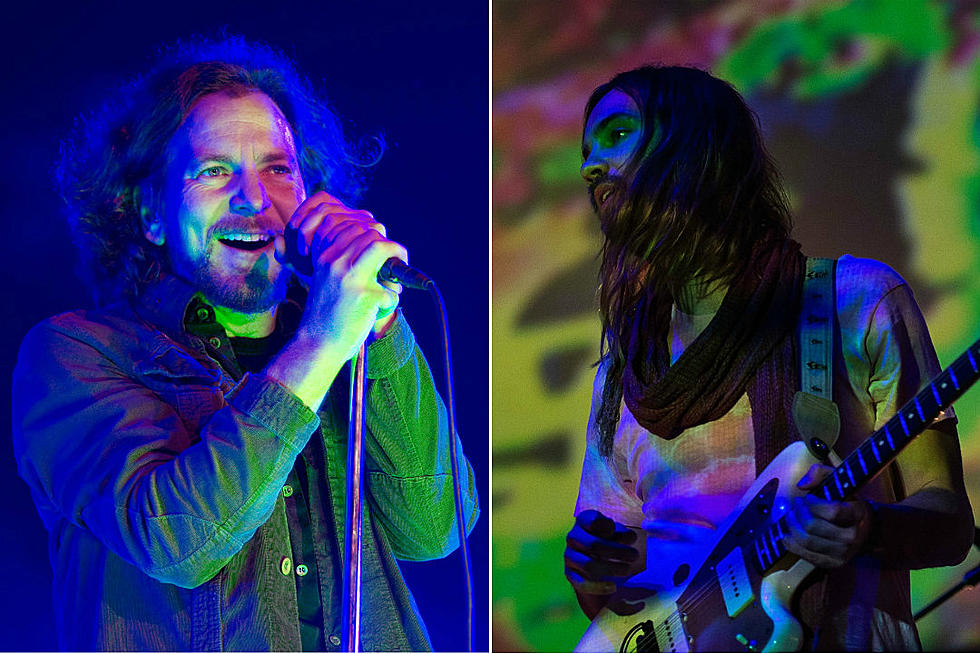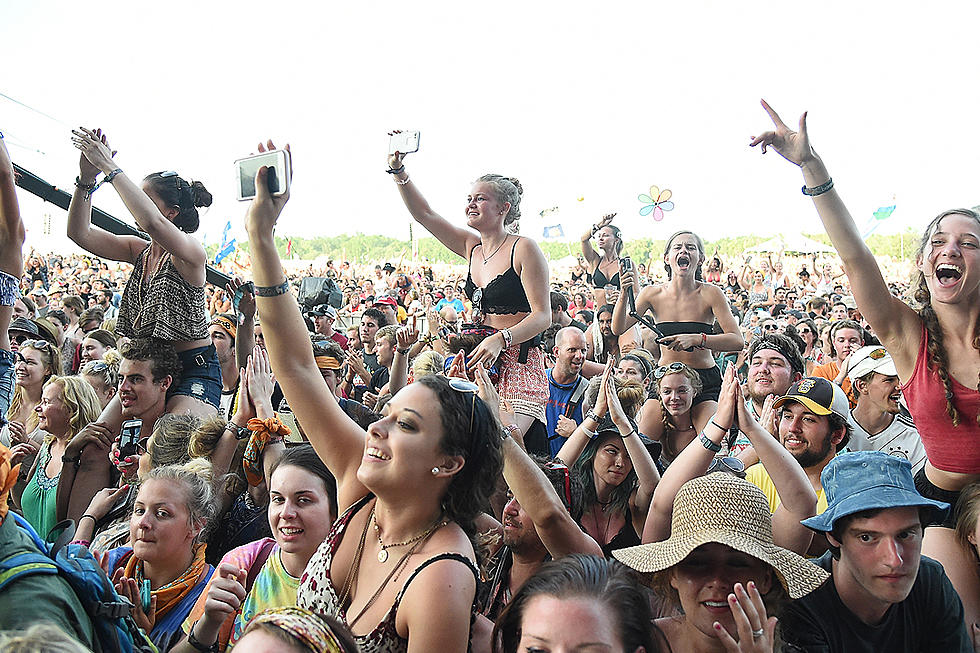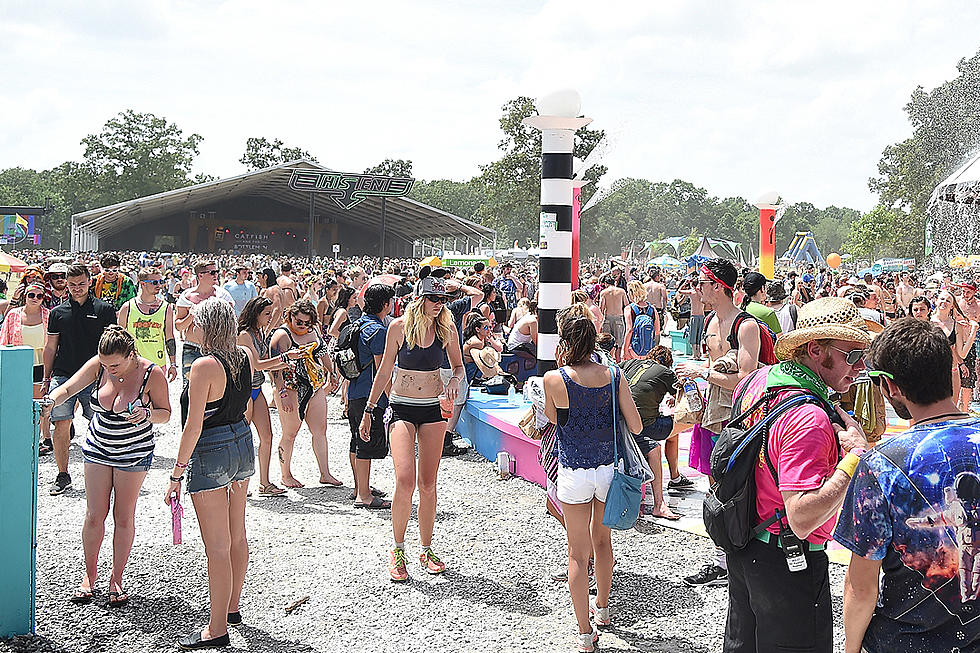15 Years Ago: Bonnaroo’s Jam Band-Heavy Debut Starts a Stateside Revolution
In an era in which huge festivals have conquered the U.S. summer music scene – along with many a city park, rural landscape and desert valley – it’s sometimes difficult to remember that this wasn’t always the case. Back in 2002, Coachella was a baby festival, Lollapalooza had yet to re-emerge as a big-ticket event and destination music fests were still the domain of the Europeans. But a handful of music promoters thought they could bring some of that European festival atmosphere to the American South.
“I started traveling [to Europe] fairly regularly in the '80s, and I saw what a vibrant festival culture there was,” Ashley Capps, a long-running promoter in Knoxville, Tennessee, told Entertainment Weekly. “I was like, ‘Why doesn’t the States have more of these?’ So on a small scale I produced Mountain Oasis in 2000, outside of Asheville, N.C., and it was overwhelmingly successful. I was like, ‘This is an idea whose time had come’.”
Capps’s AC Entertainment then began communicating with Superfly Presents, a New Orleans-based music promotion enterprise formed by four friends - three of whom were classmates at Tulane University. Like Capps, Kerry Black, Rick Farman, Richard Goodstone and Jonathan Mayers had put on many successful shows, but were looking to do something bigger. AC and Superfly joined forces to start a multi-day music festival, inspired by European events such as Glastonbury, along with weekend festivals hosted by Phish.
All they needed was a site, a name and performers. Sounds easy, right? Actually, everything came together relatively quickly. After looking at a few locations, the gang settled on a farm in rural Manchester, Tenn., because of its facilities and location near Nashville, Knoxville and Chattanooga. It had hosted the classic rock-oriented Itchycoo festival in 1999.
The name Bonnaroo came from a 1974 album by Dr. John, Desitively Bonnaroo. It’s a Creole word that translates, roughly, to “a really good time.” When it came to booking bands, Capps was able to rely on his 20-plus years of relationships with musicians.
“I have a long-standing relationship with Widespread Panic, and I remember going out to the land and standing there and their response was, ‘You’re crazy, but we’ll do it’,” Capps said. “Once we had a band of their stature, people started buying into the concept.”
Watch Widespread Panic Play 'Tall Boy' at Bonnaroo
Bonnaroo’s first lineup was mostly made up of jam bands and artists: Gov’t Mule, the String Cheese Incident, moe., Bela Fleck, Trey Anastasio and Phil Lesh and Friends with Bob Weir. Although the festival also brought in hip-hop group Jurassic 5, bluegrass artist Del McCoury, gospel singers the Blind Boys of Alabama and soon-to-be-superstar Norah Jones, even those acts appealed to the rootsy tastes of the jam band-obsessed.
The first-ever Bonnaroo was announced for June 21-23, 2002, featuring two stages, two tents and a cinema tent showing classic concert and music flicks. The organizers avoided traditional advertising and ticket outlets, deciding to appeal to jam band aficionados through the internet and sell passes via the festival’s website.
“We sold like 12,000 tickets [the first day]. We hoped to sell 6,000 or 7,000 in those first two weeks,” Capps said. “We were like, ‘Oh my God. What are we going to do?’ After a couple more days we had to raise the price – and then they sold even quicker! It was all because of that network of fans that the bands had established on the Internet. Jam bands pioneered the use of the internet to communicate directly with their fans.”
The demand was enormous. Bonnaroo sold out its 70,000 tickets in about two weeks. And yet, Manchester area businesses, residents and police force didn’t believe the festival would be such a big deal. Unfortunately, that resulted in a different kind of jam – 20-mile stretches of backed-up highway traffic. Slowly but surely, bands and fans alike made it into the festival – and organizers and police made the decision to change their approach to traffic the next year. Despite the hiccups, the organizers were thrilled with what they were seeing.
“I got up really early in the morning to go to the site and get ready for the big opening of the doors, and it seemed like every inch of space between where I was staying and the festival site was occupied by people who had set up tents,” Capps told the Red Bulletin. “They were selling food and jewelry, dancing in the streets, basically – like a mile on both sides. All the parking lots in front of gas stations and convenience markets looked like the market at Marrakesh, just full of activity at 5 o’clock in the morning, everybody getting geared up for the festival. I remember simultaneously thinking, ‘Wow, this is amazing!’ and ‘Could I possibly be arrested for this?’”
Watch Trey Anastasio Play 'Push on Till the Day' at Bonnaroo
In addition to three days of music, the first year also started the annual superjam, a late-night jam session featuring different acts playing together. The first edition included Michael Kang, Bela Fleck, Jeff Raines and Robert Randolph. By weekend’s end, Bonnaroo appeared to be a blockbuster success.
“It’s tough to think of anything more powerful than us standing on stage at the end of the first year. There were like 70,000 people out there; it was this incredible energy. They had waited in line 15 hours to get in, and it was still the best experience of their lives,” remembered Superfly’s Goodstone. “Whether it was the bellwether of change for the industry, or just from the perspective of community and what can happen with these festivals on U.S. soil, it was certainly that moment where you just couldn’t get a smile off of our faces, realizing that we had created something that would have never happened without us.”
Bonnaroo has expanded since that first year – an extra day, additional music stages and tents, a comedy venue, the “silent disco” and more. And, although it has always included jam bands in a nod to its roots, the festival has become more diverse musically while drawing monster acts including Radiohead, Neil Young, Paul McCartney, Metallica, Jay-Z and Tom Petty and the Heartbreakers.
As Bonnaroo has grown, so has the American music festival, with events popping up around the country, some of them organized by members of Bonnaroo’s brain trust. But back in 2002, the idea of a giant fest in the Tennessee countryside seemed like a risky proposition – to everyone but the event’s founders.
“People thought we were crazy,” Capps said in 2012. “For me, it was a logical idea.”
The 50 Most Influential Artists of the 21st Century
More From Diffuser.fm









